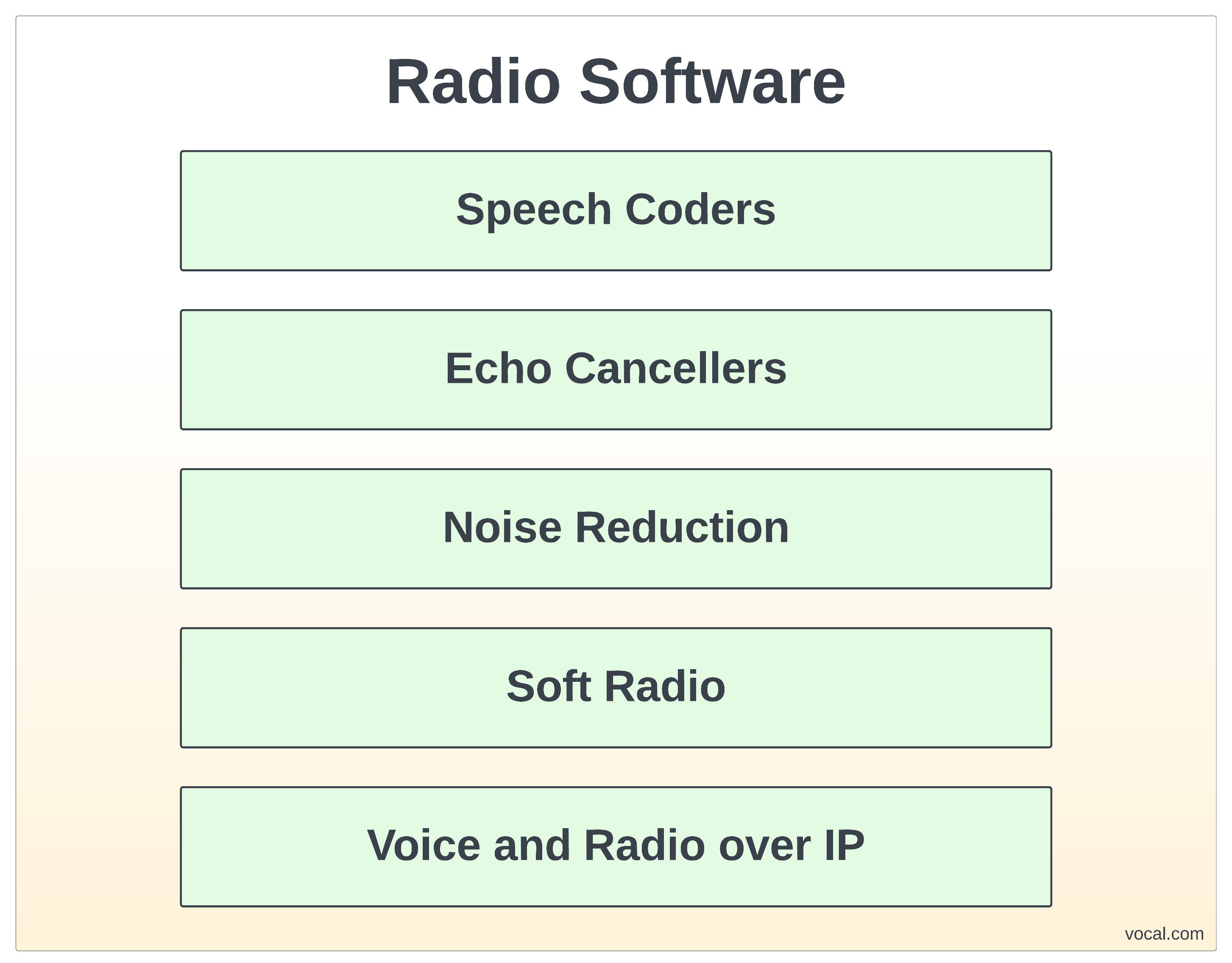Radio over IP (RoIP)

Radio over IP (RoIP) transmits radio communications over IP networks to extend the range and interoperability of radio systems. Use VOCAL’s dependable technology to enhance your current radio systems. Here are just a few of the benefits of RoIP systems:
- Extend radio communications beyond line-of-sight
- Interoperate with other communications devices
- Enable radio communications between different systems
Our RoIP design solutions provide developers and integrators with a variety of platforms while our comprehensive RoIP software provides a robust and highly configurable library, including a Network Stack and SIP Stack with jitter control, as well as a wide range of voice compression, echo cancellation, and noise reduction algorithms. Together with secure protocols SRTP, SDES, IPsec, and our encryption libraries, VOCAL’s RoIP software solution can provide clear, private, and secure radio communications. Deployments run the gamut — high-density servers, standalone comms stations, UAVs, wearable tactical radios, tiny embedded systems, and more.
Radio Over IP Solutions
RoIP Communications
Radio over IP uses VoIP protocols to transmit radio traffic over an IP network such as the public internet. In its simplest form, radio over IP converts an RF signal to digital data suitable for transport over an IP network. An IP radio network consists of several radios, which may include a combination of handheld, mobile, and fixed two-way radios, along with a RoIP gateway that provides the interface to an IP network. Session Initiation Protocol (SIP) and Real-time Transport Protocol (RTP) are the workhorses of RoIP. The European Organization for Civil Aviation Equipment (EUROCAE) ED-137 defines industry standards for the use of Radio over IP for air traffic control. This series of specs defines what VoIP specifications should be used in a RoIP environment for compatibility. VOCAL offers ED-137 support in its RoIP offerings. Radio over IP offers numerous advantages to both existing radio networks as well as new communications systems under development. Here are a few of those advantages:
- Extend the range of an existing radio network: Users in IP radio networks can communicate with endpoints that are outside the range or line of sight of the local network.
- Access other devices: By using any number of available VoIP service providers, a radio can communicate with mobile devices, telephones, and other endpoints anywhere in the world.
- Interoperability between IP radio networks: By providing a common interface between the different networks, two RoIP gateway devices can communicate with each other directly using the Internet Protocol regardless of the analog or digital local radio networks the gateways are associated with.
VOCAL’s Radio over IP code is optimized for performance on both standard X86/X64 architectures as well as DSP architectures from TI, ADI, ARM, AMD, Intel, and other leading vendors.
Custom designs are also available for our clients. We will work to provide you with the best RoIP system for your needs. Our reliable engineers can answer any of your technical questions and have the experience to quickly integrate any necessary components. Contact Us for a demo and to discuss your specific RoIP application requirements.

VOCAL’s solution is available for the above platforms. Please contact us for specific supported platforms.